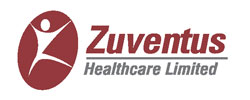Extended Producer Responsibility (EPR) for waste tyres refers to the obligation imposed on tyre
manufacturers to manage end-of-life tyres in an environmentally responsible way, ensuring that both
human health and the environment are protected from the potential negative impacts of tyre waste. The
Ministry of Environment, Forest, and Climate Change introduced the Hazardous and Other Wastes Amendment
Rules, 2022, which came into effect on July 21, 2022. This amendment added Schedule IX, which lays out
the rules for producers, recyclers, and retreaders to utilize and manage waste tyres.
Under the EPR for Waste tyres framework, manufacturers, importers, and brand owners who deal with the
production and sale of new tyres, as well as importers of waste tyres, are required to fulfill extended
producer responsibilities. These responsibilities include establishing a network for collecting,
transporting, and recycling or disposing of end-of-life tyres in an environmentally sound manner.
Retreaders, who replace worn tyre treads with new ones, are also subject to these regulations. This
overview aims to guide all entities in the tyre manufacturing and management sector through the
registration process and their post-compliance duties on the centralized CPCB portal.
Benefits of EPR for Waste Tyres
The advantages of Extended Producer Responsibility (EPR) for waste tyres extend beyond simply obtaining
EPR certification or searching for EPR certificates for rubber and waste tyres. These benefits are
crucial for the entire nation:
 Reduces dependence on
waste disposal methods like landfilling or incineration.
Reduces dependence on
waste disposal methods like landfilling or incineration. Alleviates the
physical and financial burden on local municipalities to manage waste.
Alleviates the
physical and financial burden on local municipalities to manage waste. Promotes proper
recycling and refurbishment of products and their components.
Promotes proper
recycling and refurbishment of products and their components. Simplifies and speeds
up the disassembly of products.
Simplifies and speeds
up the disassembly of products. Encourages the
conservation of natural resources.
Encourages the
conservation of natural resources. Reduces the overall
amount of waste generated.
Reduces the overall
amount of waste generated.
Documents Required for EPR Registration for Waste tyres
To complete the EPR registration process for Waste tyre Management through the CPCB, the following
documents may be necessary:
- Company PAN Card: To verify the legal identity of the company.
- GST Number: To confirm the company's tax registration status.
- IEC Number (for importers): Required if the company imports waste tyres and needs
to comply with import-export regulations.
- CIN Number: To validate the company's registration details with the Ministry of
Corporate Affairs.
- Aadhar Number of the Authorized Person: To verify the identity of the individual
responsible for waste tyre management activities.
- Covering Letter: As per Annexure A (provided in the official Instruction Sheet).
- Undertaking: As per Annexure B (provided in the official Instruction Sheet).
- tyre Composition: As per Annexure C (outlined in the official Instruction Sheet).
- Plant-wise Manufacturing Data: As per Annexure D (provided in the official
Instruction Sheet).
Additionally, the applicant must provide other relevant documents to fulfill the EPR requirements for
waste tyres, including:
- Proof of ownership or lease of the premises where waste tyre management activities will take
place.
- Details of the proposed EPR plan, covering the collection, storage, transportation,
processing, and disposal of waste tyres.
- Environmental clearances or No Objection Certificates (NOCs) from the appropriate
authorities.
Requirements for EPR Compliance for Waste tyres
The amended rules introduce several key requirements, including:
- Entity Registration under EPR for Waste tyres: All entities must register on the
CPCB portal before starting or continuing their business activities.
- EPR Compliance Modalities: The Extended Producer Responsibility (EPR) obligations
outlined in the amendment rules are divided based on the entity's registration on the CPCB
portal:
- Producers of New tyres: The EPR obligation imposed on producers
(manufacturers or importers) of new tyres is as follows:
- For 2022-2023 (the year the Schedule took effect), the EPR obligation is
set at 35% of the weight of new tyres manufactured or imported in
2020-2021.
- For 2023-2024, the EPR obligation increases to 70% of the weight of
tyres manufactured or imported in 2021-2022.
- For 2024-2025, the obligation reaches 100% of the weight of new tyres
manufactured or imported in 2022-2023.
- From 2025 onwards, the EPR obligation remains at 100% of the weight of
new tyres manufactured or imported in the year (Y-2).
- Units established after April 1, 2022, will have a deferred EPR
obligation, starting after two years, set at 100% of the weight of new
tyres manufactured or imported in the year (Y-2).
- Importers of Waste tyres:
Importers of waste tyres must meet an EPR obligation equal to 100% of the
weight of waste tyres imported in the preceding year (Y-1).
- Retreading: The EPR obligation for retreaded tyres will be deferred for
one year.
- Producer Responsibility under EPR for waste tyres:
The term "producer" refers to any person or entity that:
- Manufactures and sells new tyres domestically
- Sells domestically under its own brand, new tyres manufactured by other
manufacturers or suppliers
- Sells imported new tyres
- Imports vehicles fitted with new tyres
- Automobile manufacturers importing new tyres for use in new vehicles sold
domestically
- Imports waste tyres
Producers must fulfil their obligation under EPR for Waste Tyres by purchasing the EPR
certificate from registered recyclers and submitting it on the portal through quarterly
returns, as per Rule 7 of the Amendment Rules.
The producers will have to provide the details about the composition of the tyres,
including the details shown i.e.
- Average Weight of one Tyre
- Natural Rubber
- Synthetic Rubber
- Process Oil
- Steel Wire
- Textile Fibres
- Carbon Black
- Silica Antioxidants, Anti-ozonants, Curing System
- Other Material (If any)
- Total weight of materials used
- Recyclers' Responsibilities under EPR for Waste tyres: A recycler is a person
responsible for converting waste tyres into end products in an environmentally friendly way,
such as the end products include reclaimed rubber, crumb rubber modified bitumen, crumb rubber,
recovered carbon black and pyrolysis oil / char.
A tyre pyrolysis plant will be able to recycle waste tyres into carbon black and fuel oil. it
will also process rubber, oil sludge, and plastic. It's among the most environmentally sound
methods. Recovered carbon black can be used as a raw material to make new tyres.
- Responsibility of retreaders: Retreading of waste tyre have been allowed, but the
retreaders will first have to get registered on the CPCB portal to issue retreading
certificates. On
production of this certificates, the EPR obligation for the retreader was deferred by one year
(till
2023), provided that the obligation is extinguished after end-of-life disposal through a
registered
recycler.
Procedure for Applying for EPR for Waste tyres
- Submit Application: Begin by submitting an application form on the CPCB portal to
obtain login credentials.
- Login: Once you receive your login credentials, use them to access the portal.
- Complete Registration Form: Fill out the online registration form with all required
details, including applicant information, activity details, and the proposed EPR plan.
- Attach Documents: Upload all necessary documents, such as proof of ownership, the
proposed EPR plan, and any other relevant information.
- Submit Application: Submit the completed online application along with the required
documents within 30 days.
- CPCB Review: After submission, CPCB will review the application and issue a
registration number within 15 days.
- Compliance: The authorized person must comply with all EPR regulations and submit
regular reports to CPCB on their waste tyre management activities.
- EPR Authorization Certificate: approved, the applicant will receive an EPR
authorization certificate, which will be valid for two years.
Transaction of EPR Certificates
Producers can purchase Extended Producer Responsibility (EPR) certificates up to their EPR liability
for the current year (Year Y), plus any remaining liability from previous years, plus an additional
10% of the current year's liability. Producers are required to proportionately purchase EPR
certificates on a quarterly basis. All relevant data, including availability and requirements, will
be regularly updated on the portal.
Post Compliance and Inspection
CPCB holds the authority to verify compliance by producers or recyclers through inspections and
periodic audits. Appropriate actions will be taken against any violations or failure to meet EPR
targets, obligations, and responsibilities.
Penalties for Non-Compliance
Entities covered under the rules that provide false information to obtain EPR certificates, such as
generating more than 5% excess EPR certificates beyond the actual waste recycled, or that intentionally
violate any provisions of the Hazardous and Other Wastes (HWM) Rules, may face prosecution and penalties
in the form of Environmental Compensation. Non-compliance with registration requirements and failure to
meet EPR targets can result in producers, recyclers, and retreaders being held accountable under the
Environment (Protection) Act. If the EPR obligation shortfall is addressed within three subsequent
years, the entity may be eligible for a refund. However, entities can be held liable for environmental
compensation in the following situations:
 Recyclers providing
false information or issuing fraudulent EPR certificates.
Recyclers providing
false information or issuing fraudulent EPR certificates.
 Unregistered
producers, recyclers, or any entity that assists in violating the provisions.
Unregistered
producers, recyclers, or any entity that assists in violating the provisions.
Note: Payment of environmental compensation does not absolve
entities from fulfilling their EPR obligations or unfulfilled EPR targets, as any shortfall will be
carried forward to the following year, up to a maximum of three years. Refund criteria will be
applicable under specific conditions.
| Year in which shortfall is covered |
Amount of Refund applicable |
| Within the first year of the penalty imposed |
85% of the environmental compensation |
| Within the second year of the penalty imposed |
60% of the environmental compensation levied |
| Within the third year of penalty imposed |
30% of the environmental compensation |
| After the third year |
No refund |
In conclusion, the regulation of EPR for waste tyres aims to ensure that producers, recyclers, and
retreaders are held accountable under the EPR framework, taking responsibility for the proper management
and disposal of waste tyres. The 2022 Amendment has proven beneficial for these entities, giving a
significant boost to the responsible recycling market and driving the organization of the waste tyre
recycling industry. According to industry experts, these changes will also improve the quality of
retreading. With retreaders now required to register on the centralized CPCB portal and authorized to
issue retreading certificates, they will become an essential part of the EPR system for waste tyre
management in India. Additionally, the introduction of penalties and environmental compensation for
non-compliance ensures stricter adherence to registration requirements and regulatory compliance.
Why Choose SeaRoot for Plastic Waste Management?
SeaRoot is committed to supporting businesses in navigating the complexities of EPR compliance for waste
tyres. With a deep understanding of the regulatory framework and the 2022 Amendment, SeaRoot provides
comprehensive guidance to producers, recyclers, and retreaders, helping them align with the requirements
of the Extended Producer Responsibility (EPR) regime. Our team assists clients in every step of the
process, from registration on the CPCB portal to the submission of necessary documents and the
formulation of a robust EPR plan. We ensure that businesses remain compliant with the latest
regulations, mitigating risks and avoiding penalties. Beyond compliance, SeaRoot emphasizes the
importance of sustainability by promoting responsible recycling practices that not only meet regulatory
standards but also contribute to a greener future. Our expertise extends to facilitating the issuance of
retreading certificates for retreaders, helping them integrate seamlessly into the EPR ecosystem. With
SeaRoot as your partner, businesses can confidently manage their EPR obligations for waste tyres while
focusing on growth and innovation in a rapidly evolving market.
Frequently Asked Questions
1.What is Extended Producer Responsibility (EPR) for Waste tyres?

Extended Producer Responsibility (EPR) for waste tyres is a policy framework that holds
producers, importers, and brand owners responsible for the environmentally sound management of
end-of-life tyres. This includes recycling, disposal, and ensuring compliance with regulations
set forth by the CPCB.
2.Who is required to comply with EPR for Waste tyres?

EPR for waste tyres applies to all producers, importers, and brand owners who manufacture, sell,
or import new tyres, as well as those who retread or recycle waste tyres. It also includes
importers of waste tyres and entities involved in retreading activities.
3.What are the key steps in the EPR registration process for waste tyres?

The process involves registering on the CPCB portal, submitting required documents such as proof
of ownership and an EPR plan, and ensuring compliance with the CPCB guidelines. After
submission, CPCB reviews the application, and successful applicants receive an EPR authorization
certificate.
4.What are the penalties for non-compliance with EPR regulations?

Non-compliance can result in prosecution, environmental compensation, and penalties under the
Environment (Protection) Act. Entities that provide false information or generate excess EPR
certificates can face severe consequences, and any shortfall in meeting EPR obligations must be
addressed within three years.
5.What documents are required for EPR registration for waste tyres?

The documents required include the company’s PAN card, GST number, IEC number (for importers),
CIN number, Aadhar of the authorized person, and other supporting documents such as proof of
ownership, the proposed EPR plan, and environmental clearances.
6.What are the benefits of EPR for Waste tyres?

EPR helps reduce the environmental impact of waste tyres by promoting recycling and proper
disposal. It minimizes the burden on local municipalities, conserves natural resources, and
facilitates the refurbishment and recycling of tyre materials, ultimately contributing to a more
sustainable waste management system.









